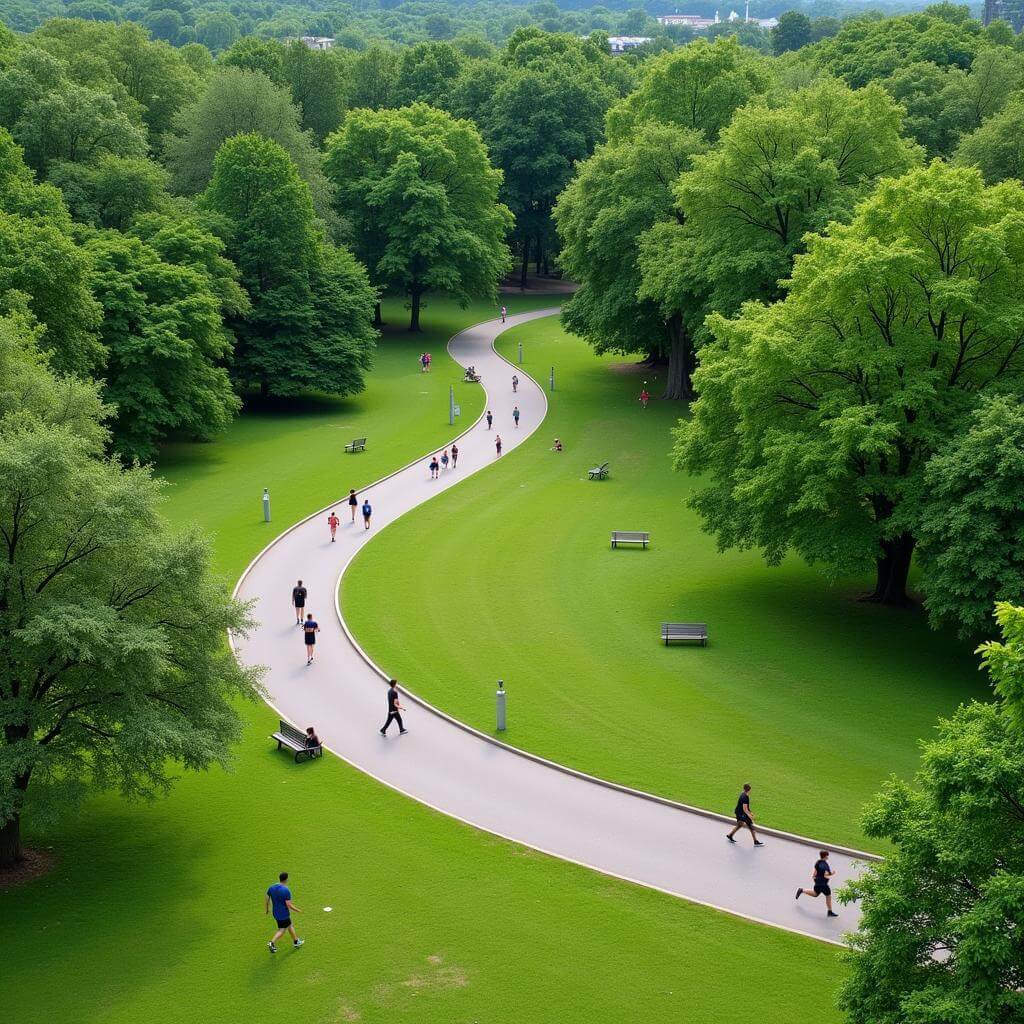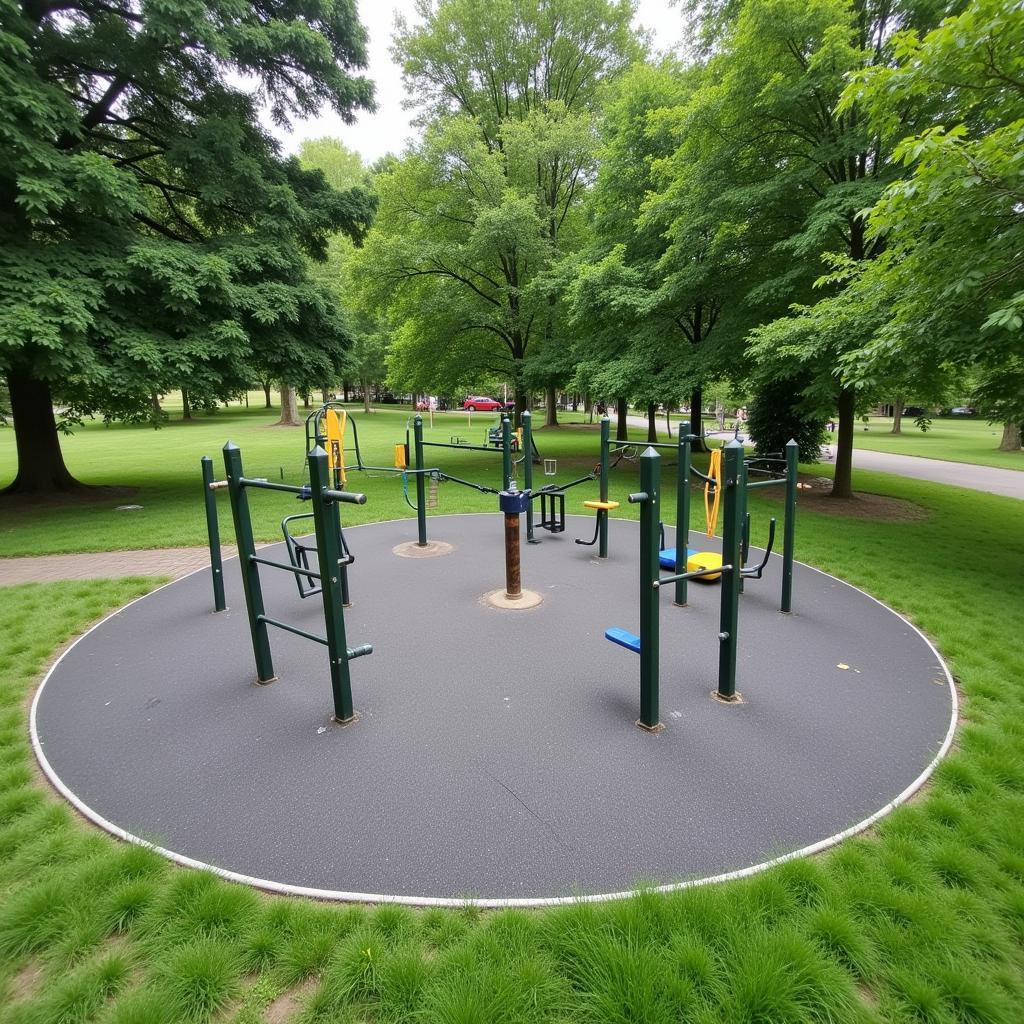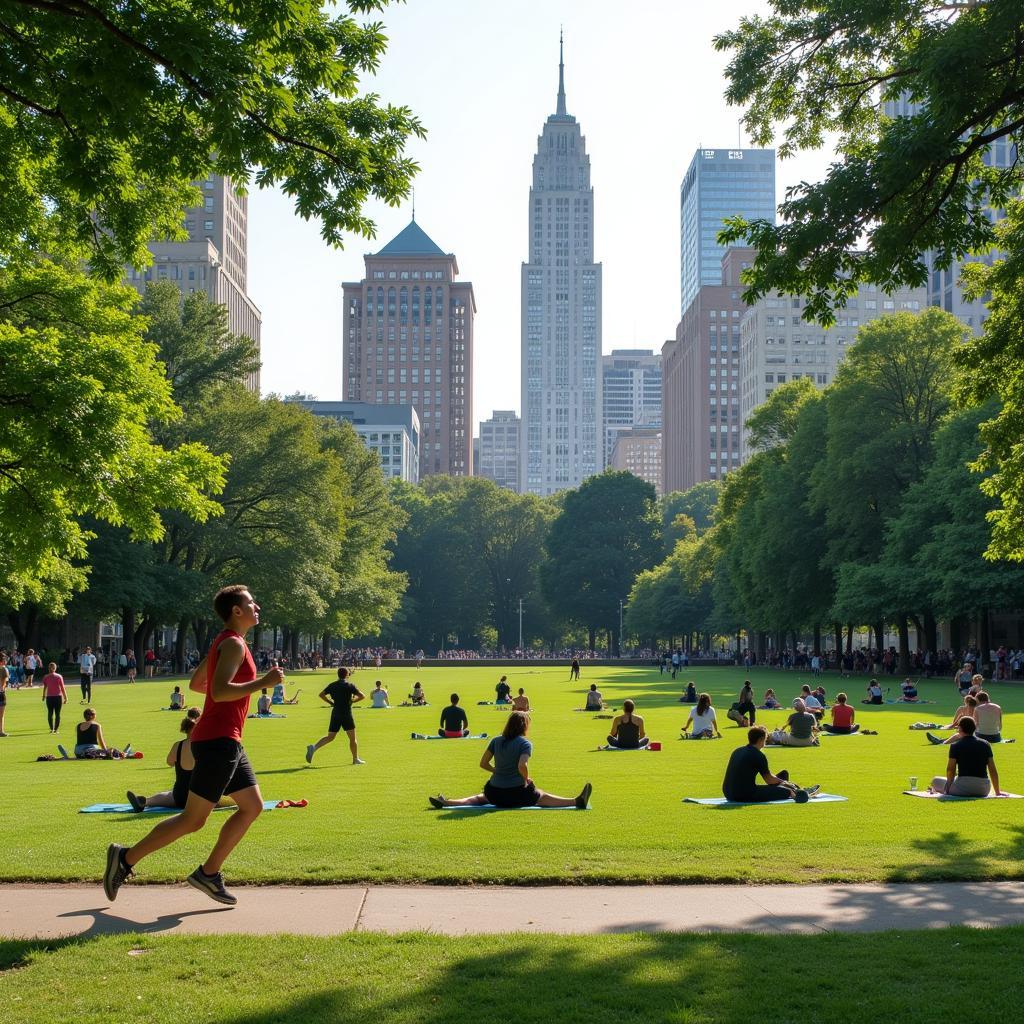When it comes to IELTS Speaking, being able to vividly describe places is a crucial skill. One common topic that often appears in the exam is describing a park or outdoor space, particularly one you enjoy visiting for exercise. This article will guide you through answering such questions effectively, helping you achieve a high score in your IELTS Speaking test.
Part 1: Introduction and Interview
In the first part of the IELTS Speaking test, you may encounter questions related to parks and exercise. Here are some common questions and suggested answers:
- Do you often visit parks?
- What activities do you usually do in parks?
- Is there a park near your home?
Let’s focus on answering the first question:
Examiner: Do you often visit parks?
Sample Answer (Band 7-8):
“Yes, I do. I make it a point to visit the local park at least twice a week. It’s become an integral part of my routine, especially since I started focusing more on my health and fitness. The park offers a refreshing change of scenery from my usual urban surroundings, and I find it’s an excellent place to unwind and recharge.”
 People exercising in a park with jogging track
People exercising in a park with jogging track
Part 2: Long Turn
In this section, you’ll be given a cue card with a topic to speak about for 1-2 minutes. Here’s a sample cue card related to our theme:
Describe a park you like to visit for exercise
You should say:
- Where this park is located
- What facilities it has
- What kind of exercise you do there
- And explain why you like visiting this park for exercise
Sample Answer (Band 8-9):
“I’d like to talk about Central Park, a sprawling green oasis in the heart of my city. It’s conveniently located just a 10-minute walk from my apartment, making it easily accessible for my daily exercise routine.
The park boasts an impressive array of facilities that cater to various fitness enthusiasts. There’s a well-maintained jogging track that winds through the park, perfect for runners and walkers alike. For those who prefer more structured workouts, there’s an outdoor gym area equipped with resistance machines and pull-up bars. The park also features several multi-purpose courts for basketball and tennis, adding to its appeal for sports lovers.
Personally, I’m particularly fond of the park for my morning jogs. I typically start my day with a brisk 5-kilometer run around the park’s perimeter. The track offers a mix of flat terrain and gentle inclines, which helps me vary the intensity of my workouts. On weekends, I often join a local yoga group that meets on the expansive lawn areas for outdoor sessions.
What I find most appealing about exercising in this park is the invigorating atmosphere it provides. The lush greenery and vibrant flora create a refreshing environment that’s a stark contrast to the concrete jungle surrounding it. The park is always teeming with like-minded individuals, from families enjoying picnics to fitness enthusiasts pushing their limits. This sense of community and shared purpose is incredibly motivating.
Moreover, the park offers a welcome respite from the hustle and bustle of city life. The sound of rustling leaves and chirping birds provides a soothing backdrop to my workouts, helping me de-stress and focus on my physical well-being. It’s not just about exercise; it’s a holistic experience that rejuvenates both body and mind.
In essence, this park has become my go-to spot for maintaining my fitness regimen while simultaneously connecting with nature and my community. It’s a vital component of my overall well-being strategy, offering benefits that extend far beyond mere physical exercise.”
 Outdoor gym equipment in a public park
Outdoor gym equipment in a public park
Follow-up questions:
- How often do you visit this park for exercise?
- Have you noticed any changes in the park over time?
- Do you think the park facilities could be improved in any way?
Sample Answer for Question 1 (Band 8-9):
“I make it a point to visit the park for exercise almost daily. On weekdays, I’m there bright and early, usually around 6:30 AM, for my morning jog before heading to work. It’s become such an integral part of my routine that I feel a bit off-kilter if I miss a day. On weekends, I tend to spend more time there, often combining my usual run with some strength training at the outdoor gym or participating in group activities like yoga or tai chi sessions. This consistent engagement with the park has not only boosted my physical fitness but has also significantly improved my mental well-being, helping me start each day on a positive note.”
Part 3: Two-way Discussion
In this section, the examiner will ask more abstract questions related to the topic. Here’s an example:
Examiner: How do you think urban parks contribute to the well-being of city dwellers?
Sample Answer (Band 8-9):
“Urban parks play a crucial role in enhancing the quality of life for city residents in multiple ways. Firstly, they provide a much-needed green refuge in the concrete jungle, offering a space where people can reconnect with nature. This connection is vital for mental health, helping to reduce stress, anxiety, and depression that are often exacerbated by the fast-paced urban lifestyle.
Moreover, parks serve as communal spaces that foster social interaction and community bonding. They’re democratic spaces where people from all walks of life can come together, promoting social cohesion and breaking down barriers. This is particularly important in diverse urban settings where opportunities for meaningful inter-community interaction might be limited.
From a health perspective, urban parks are invaluable assets in promoting physical activity. They provide free, accessible spaces for exercise, which is crucial in combating the sedentary lifestyles often associated with city living. Whether it’s jogging, cycling, or participating in group fitness activities, parks encourage residents to engage in regular physical activity, contributing to better overall health outcomes and reducing the burden on healthcare systems.
Additionally, parks play a significant role in environmental sustainability. They act as the ‘green lungs’ of the city, improving air quality by filtering pollutants and producing oxygen. They also help in temperature regulation, mitigating the urban heat island effect, which is becoming increasingly important in the face of climate change.
Lastly, well-maintained parks can boost the economic vitality of surrounding areas. They often lead to increased property values and can attract businesses and tourists, contributing to the local economy.
In essence, urban parks are multifaceted assets that contribute to the physical, mental, social, and economic well-being of city dwellers, making them indispensable features of any thriving urban landscape.”
 People exercising in a bustling urban park
People exercising in a bustling urban park
Key Vocabulary and Phrases for High Scores
To elevate your speaking performance, incorporate these sophisticated vocabulary items and phrases:
-
Sprawling green oasis /sprɔːlɪŋ griːn ˈəʊeɪsɪs/ (noun phrase): A large, expansive area of greenery in an urban setting.
Example: “Central Park is a sprawling green oasis in the heart of New York City.” -
Invigorating atmosphere /ɪnˈvɪɡəreɪtɪŋ ˈætməsfɪə/ (noun phrase): An environment that makes one feel energetic and lively.
Example: “The park’s invigorating atmosphere motivates me to push harder during my workouts.” -
Teeming with /ˈtiːmɪŋ wɪð/ (phrasal verb): To be full of or swarming with.
Example: “On weekends, the park is teeming with families and fitness enthusiasts.” -
Holistic experience /həˈlɪstɪk ɪkˈspɪəriəns/ (noun phrase): An experience that addresses all aspects of something, especially a person’s well-being.
Example: “Exercising in the park provides a holistic experience, benefiting both body and mind.” -
Vital component /ˈvaɪtl kəmˈpəʊnənt/ (noun phrase): An essential or crucial part of something.
Example: “Regular exercise is a vital component of a healthy lifestyle.”
Examiner’s Advice
To excel in the IELTS Speaking test, particularly when describing a park or exercise space:
-
Use descriptive language: Paint a vivid picture with your words. Instead of simply saying “nice park,” describe the “lush greenery” or “winding paths.”
-
Vary your vocabulary: Demonstrate a range of vocabulary related to exercise, nature, and urban planning. This shows the examiner your language proficiency.
-
Structure your answer: In Part 2, use the cue card points as a framework, but elaborate on each point to create a coherent narrative.
-
Show personal connection: Relate your descriptions to personal experiences or feelings. This adds authenticity to your answer.
-
Practice fluency: Aim for smooth delivery without long pauses. Regular practice speaking about common topics like parks and exercise can help improve your fluency.
-
Engage with abstract ideas: In Part 3, be prepared to discuss broader concepts related to parks, such as their role in society or urban planning. This demonstrates your ability to think critically and express complex ideas in English.
Remember, the key to success in IELTS Speaking is not just about what you say, but how you say it. Confidence, fluency, and a rich vocabulary will help you describe a public space that is popular in your town or any other topic with ease and precision.


